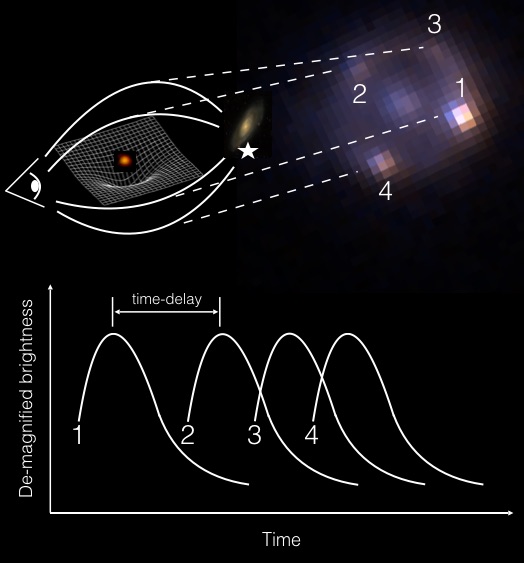I chase after stellar explosions, odd-ball variables, and moving objects in our solar system. When I am tired, I gaze at Andromeda or stare into the deep sky for galaxies at the early Universe.

Time-domain Studies
M31, our closest neighboring galaxy, is a stepping stone to studies of stellar evolution, star formation, galaxy evolution, and cosmology. Thanks to wide-field cameras, especially Pan-STARRS and PTF, we are able to have a complete view of our neighboring galaxy, enabling an inventory of its variable content.

Gravitational lensing
Gravitational lensing systems provide unique opportunities to study distant galaies and cosmology in detail. On one hand, modeling the lensed images enables us to constrain the mass profile and dark matter distribution of the lens, as well as probing dwarf satellites associated with the lens galaxy to test Lambda-CDM model. On the other hand, gravitational lensing in tandem with Hubble space telescope offers us a peak into galaxies at cosmic down, which is otherwise beyond the reach of current instruments.

Exoplanets, brown dwarfs, and low mass stars
Searching for and characterization of planets beyond the solar system has been a long quest for observational astronomy. Since the first discovery of exoplanet in 1995 (51 Peg b), there have been thousands of exoplanets identified via radial velocity, transit, microlensing, direct imaging, and so on. These exoplanets not only provide us a hint on how our own solar system formed, but even more so, may host extraterrestrial lives.
Low mass stars and brown dwarfs are the most abundant objects in the Milky Way and prevail in the solar neighborhood. However, due to their faintness in the optical bands, they are difficult to discover and characterize. Thanks to the advent of wide-field cameras/spectrographs and the on-going large sky surveys, we are not only able to identify these low mass objects, but pin down their fundamental properties, such as mass, radius, and temperature. These properties are pertinent to exoplanet studies, because as most of the exoplanets are studied in an indirect method, e.g. radial velocity, transit, microlensing, we need to have a good handle of the host star properties before we use them to interpret the exoplanetary properties.
